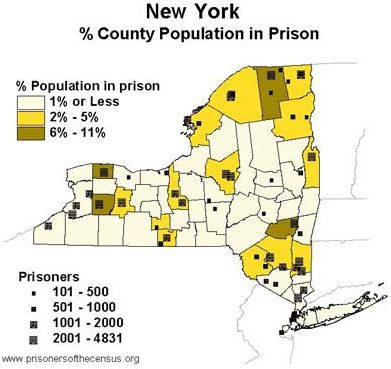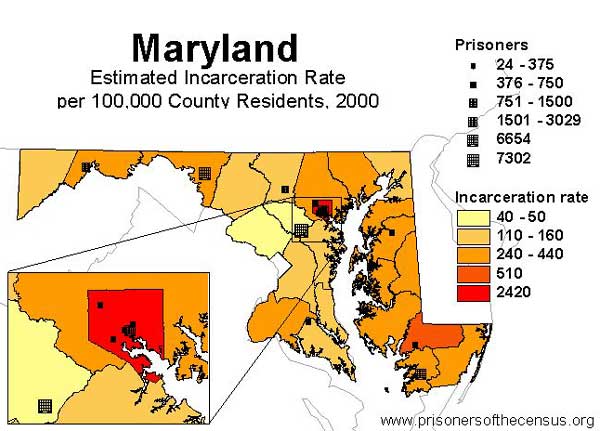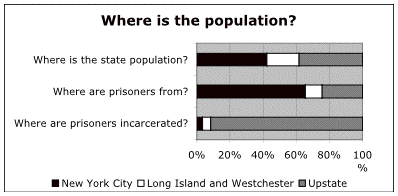Prisoners skew local rural redistricting too
by Peter Wagner, September 22, 2003
Counting prisoners as residents of the prison town can skew the balance of political power within a rural community as well. As I wrote in Bogus data pumps up the rural population, the reported population of many rural counties with prisons can be significantly changed by as much as 5 or 10% as a result of counting mostly-urban prisoners at the prison. In counties with a legislative form of government, including the prisoners in the base population can significantly boost the weight of a vote in the prison town while diluting the weight of a vote in other portions of a county.
In Greene County NY, the county legislature proposed to include prisoners in the count. The two prisons in Coxsackie in the northeast corner of the county amounted to 6% of the county’s population. Of course, the prisoners can’t vote and few if any are from Greene County. Including the prisoners would have resulted in the town of Coxsackie getting 48% more representation in the local legislature than it was entitled to.

At the urging of residents elsewhere in the county, the Greene County legislature decided to change from previous practice and exclude the prisoners from the count. This was the correct thing to do. The change did not hurt the ability of the prisoners to get representation in local government (as they were not residents of Greene County in the first place), and it brought the principle of “one person one vote” to the local county legislature.
Unfortunately, this was not the practice everywhere in New York, and the diversity of approaches shows that contrary to assumption, counties are not obligated to slavishly use inappropriate Census data in their redistricting. According to a survey distributed by Saint Lawrence County, 14 counties included prisoners in their redistricting and 9 excluded them. (Ten of the prison counties did not respond.)
See also Exclude prisoners from local redistricting submitted to Daily Freeman, Greene County, New York, February 3, 2003.






